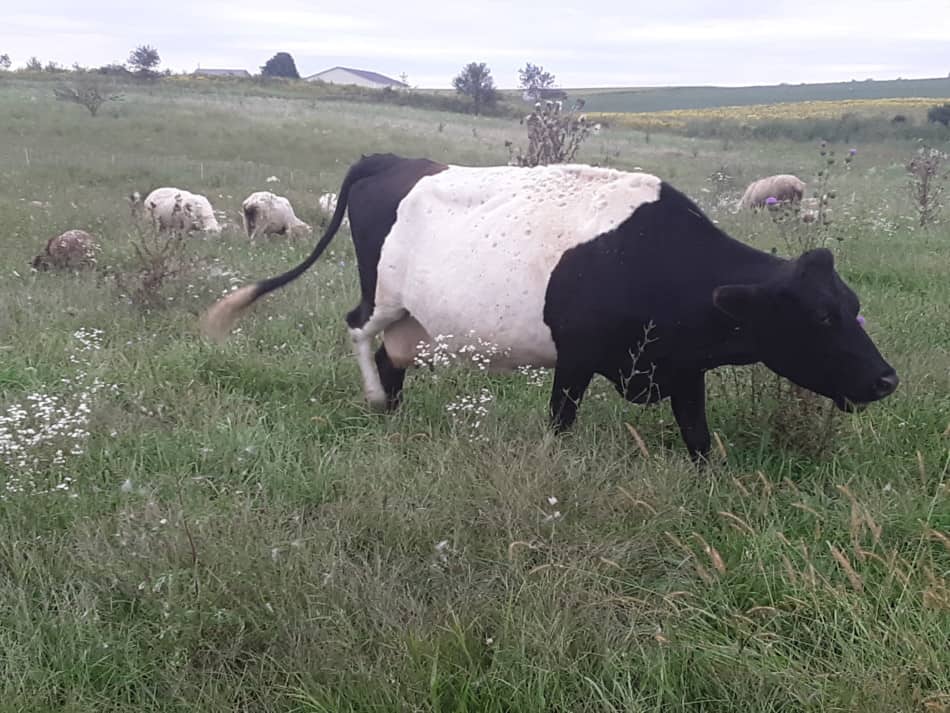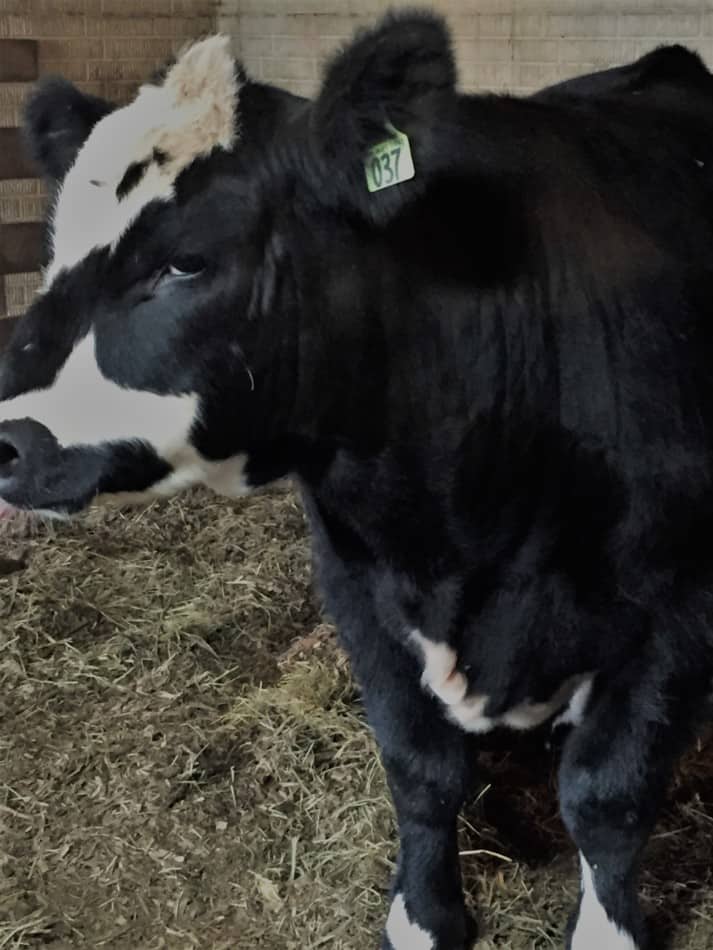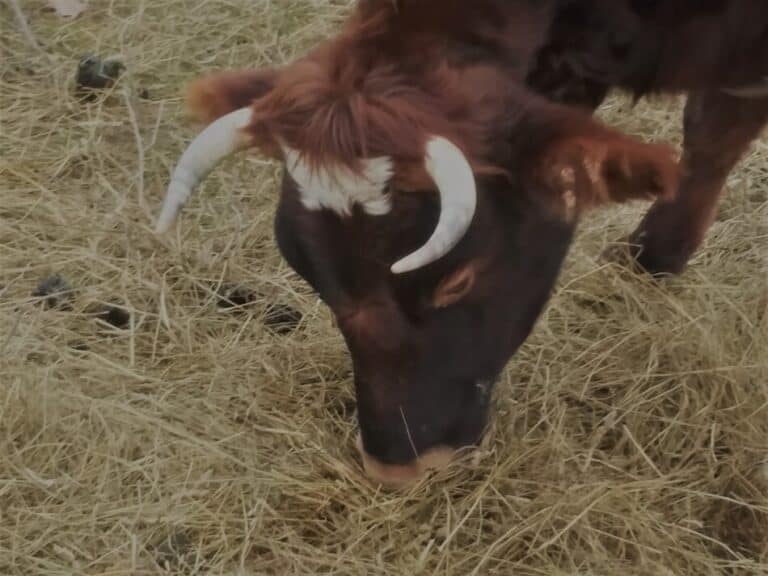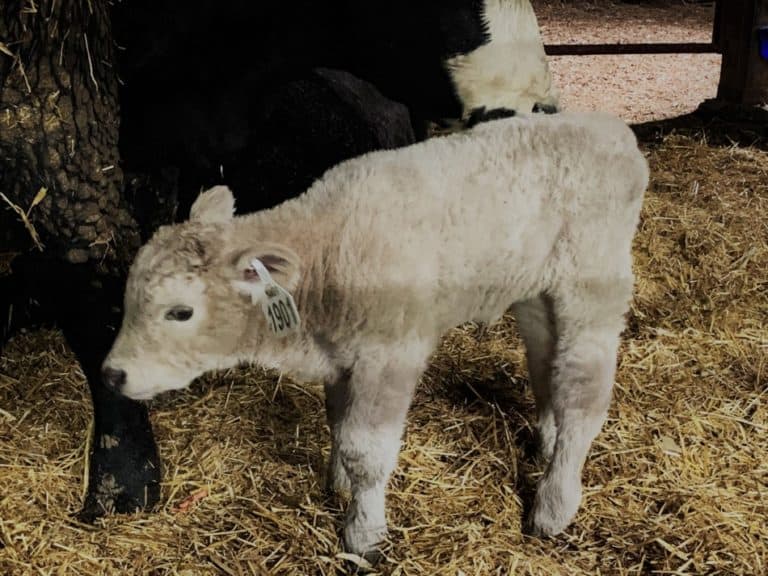Cattle Guards: How Do They Work And Should You Use Them?

Need a gate across your driveway to keep your cattle off the road? We do. The gates work fine, but also require seemingly constant opening and shutting.
Options? There a few choices: getting rid of the livestock (No Way!), automatic gates (pricey) or the old school answer-a cattle guard.
A cattle guard (also called grid or grate) is a drive over section of the driveway that is dug out then overlaid with pipe or molded concrete ridges that the cattle will not cross it because of their limited depth perception.
Going in and out of our gates gets old fast. Open and shut to leave and repeat to get back to the house.
Not to mention added difficulties in cold or hot weather, rain, gates freezing in position, etc.
Is Raising Your Own Beef Worth It? shows you the things you need to have figured out when planning to get your beef in the freezer.
We have to be sure of the livestock not getting on the road, so what to do? Well for us, since we have a variety of livestock, we will just keep using the gates.

You can see in the above picture one of our cows, Sophie, grazing with the sheep, we also have three draft horses and a few goats, neither of which are cattle guard material.
But if you have just cattle, or only cattle have access to the area in question you could save yourself the hassle of gates and put in a cattle guard.
Cattle guards are a drive over gateway
The cattle guard keeps the cattle from going through a gateway that you want to keep open for vehicles, but not passable for the cattle.
Granted, the cattle guard is more common for a large livestock operation, rather than the family farm size operations like we have here in Ohio. It’s much more likely to be in the cattle stations or the range operations of the western states.
Even though cattle guards are rare in around here, when we moved to this farm our neighbors, life long sheep farmers, had a cattle guard.
They used to keep their sheep from going down the driveway. They were interesting, frugal people who had made a lifetime of common sense improvements to their farm. including a cattle guard.
That says something about the practicality of having one.
Cattle depth perception makes cattle guards work
The short version is-they are scared to cross it. For the “pit” style cattle guards, the darkness under the cattle guard makes them uneasy.
Combine the visuals with the uneven upper surface of the pipes and the cow doesn’t want to chance it.
So, this is a two part deterrent to the cattle-the visual effect and the uneven surface. Let’s look into each one a bit more.
Visual or looks aspect of a cattle guard
Cattle do not see the same way that we do.
Under the cattle guard is a dug out spot, like a wide trench or a huge pothole. The cattle do not like the dug out part, since they cannot tell the depth of a dark area well.
Is the bottom of the cattle guard just below the pipes or a heck of a ways down there? They can’t tell.
Cattle have amazing ability when it comes to field of vision, but that comes at a cost to some of the short range vision.
Their eyes are built to help them see predators from a distance not figure out some weird hole in the middle of the driveway.
Uneven upper surface of a cattle guard
The second part of a cattle guard is the additional hurdle for any bovine brave enough to get past the deep dark hole visuals-the rounded or partially rounded tops of the pipes.
Cattle like secure footing. Her flat bottomed hoof on a pipe is not secure. Take another look at the picture in the beginning of the article, you can clearly see the pipes and the “holes” underneath.
Now for an animal more nimble and adventurous like a goat, the cattle guard is not much of a barrier. Once a goat’s willing to take the chance, no worries. For a cow, it’s just no!
Properly set cattle guards are safe
It is possible for cattle or other animals to get stuck in a cattle guard by having their hooves go down through the pipes.
This is bad new for the cow or bull, as it is likely to be injured while trying to get out.
But the answer here is obvious, use the newer made cattle guards with the pipes set closer together so the hoof can’t fit down between them.
Or if you are still unsure about it, get a molded concrete style guard instead, where the hoof can’t go through since the bottom of the concrete is solid.
There are multiple designs online for you to consider.
I have to point out that injury can happen anywhere. Even with the molded concrete cattle guards or the newer metal designs the cow could still fall and hurt herself, no design is bullet proof.
Take a minute to think about it. If the cattle are all ending up stuck in the cattle guard and hurting themselves the rancher or farmer goes out of business.
The farmer or rancher makes money on healthy cattle, not hurt cattle. Paying to install a cattle guard to hurt your own cattle? That doesn’t make sense.
How Cattle Guards Work is a BeefRunner article that has another perspective on cattle guards.
An unfortunate example
I was poking around online and noticed a picture of a cow stuck in the cattle guard because she is trying to get to her calf.
This is not a normal behavior for that cow, or she would have scampered across the cattle guard without worry. What happened here?
This is a lapse in management.
Calves can get into some crazy places, it is the job of the farmer or rancher to be aware of this and keep potential accidents from happening.
Animals likely to cross the cattle guard should not be kept next to it!
This isn’t just limited to calves, bulls seeking a female in heat would be another likely risk taker in this situation.
Cattle guards should be 8 linear ft.
The ideal width of a cattle guard depends upon what you are trying to do with it and which way you are measuring.
If you mean width cutting across the driveway from side to side, well you need enough to be able to fit all of the vehicles through the gateway, so it depends upon you.
If you mean width of the cattle guard running with the length of the road (the same way you would drive) then 8 feet.
Unless you are hoping to deter deer, then it needs to be more like 16 feet (or greater).
Dogs will cross a cattle guard
The likely answer here is yes dogs will cross a cattle guard.
Why? The bottom of their paws is soft and allowing better grip on the pipes or concrete, unlike the hard and slippery bottom of the bovine hoof.
If you are asking, will your dog be okay with crossing a cattle guard, well that depends upon your dog and how adventurous or determined he or she is feeling.
Just like people some dogs are more go now, think later and others will be more hesitant.
But as always better safe than sorry. If you need to keep dogs on one side of the cattle guard or the other you need a dog proof gate.
Goats can cross a cattle guard
We have a few goats, but do not have a cattle guard, so I can only tell you what I have read and know based on having goats.
I would guess the goats would view the cattle guard as a challenge and something unusual to stand on, which seems to draw them like a magnet.
My best guess is no, the cattle guard would not work for goats.
Maybe for a few days as long as they are otherwise occupied, but once they are looking to explore they are headed over.
Cattle guards are made metal or concrete
Cattle guards seem to be made in one of two styles, metal or concrete.
Both styles involve digging out where the cattle guard will be placed, but there are differences in depth and where the cattle guard is placed depending upon the type of guard being used.
The metal ones look like a pipe gate that is laid across a wide trench in the driveway. In order to work effectively, both the metal part and the trench part have to be there.
The concrete cattle guards still need to have a trench dug but it is more shallow since the concrete is going to sit in the trench and stick up above the level of the road or driveway that will go over it.
Metal cattle guards weigh 1,000-1,300 pounds
The weight of the cattle guard depends upon which one you get and how long it is.
The metal ones weigh from 100-130 pounds per linear foot, making a 10 foot cattle guard weigh 1,000 to 1,300 pounds.
Concrete cattle guards weigh 9,000-11,000 pounds
The concrete cattle guards are from 9,000 pounds for a 12 foot length to 11,000 pounds for a 16 foot length at Weiser Concrete, click here to visit the website.
There are other designs and businesses that make and sell these concrete cattle guards, as well.
I mention Weiser Concrete because they have a clear answer to the weight of the cattle guard and pictures showing the guard as manufactured and as it looks/sits installed.
Another website with clear dimensions and weights for their concrete cattle guards is Smith-Midland.
They list out lengths and weights as follows: 12 foot cattle guard weighs 6,000 pounds, 14 ft is 6,800 pounds and the 16 ft model is 7,200 pounds. Click here to check out their site.
You can make your own cattle guard
You sure can. There are companies that sell molds so you can pour your own concrete cattle guards.
If you are handy with welding, I’m sure fabricating your own cattle guard out of metal pipe is doable. I’m not a welder, trust me on this one, so you’ll have to do your own search for plans or ideas.
Should you use a cattle guard?
If a cattle guard will suit your operation, go for it.
Having a cattle proof opening that does not require opening and shutting gates is handy and saves you time.





